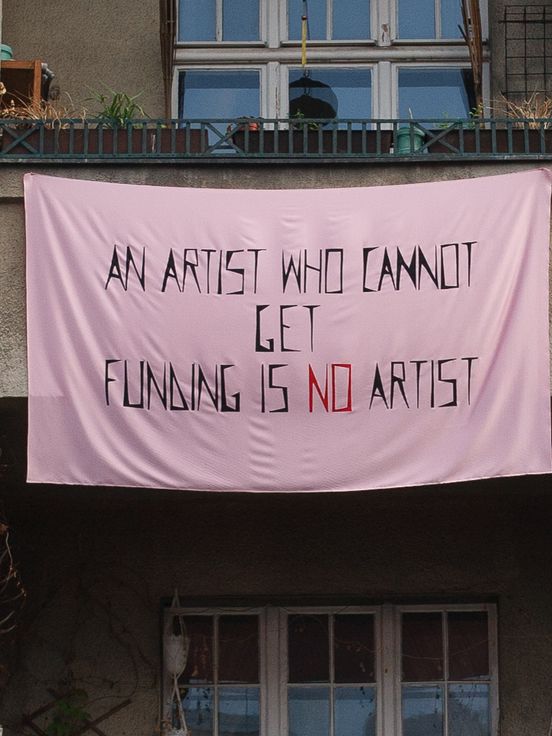Classism and Access
When one’s background impedes access to educational institutions, exhibition opportunities, or funding, classism is usually at play. This has as much to do with a lack of financial resources as it does with having insufficient contacts or knowledge required to write grant applications. Yet, funding is a crucial factor for an artist's career; Vlad Brăteanu names its importance on his banner declaring “An artist without funding is no artist”.






